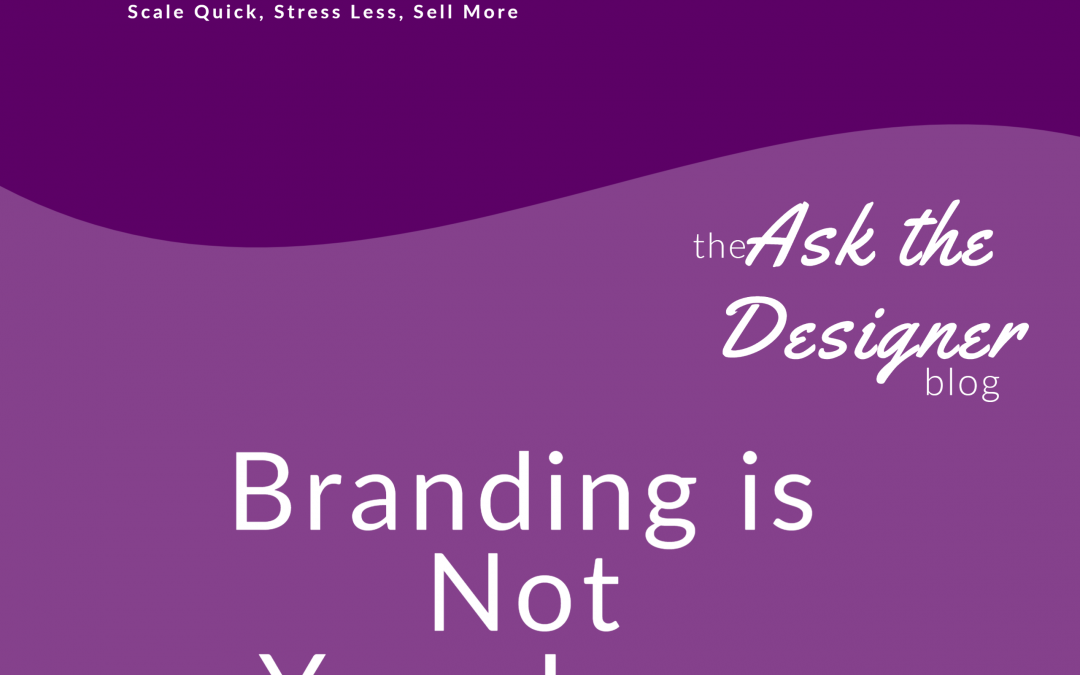I had an email from a potential client the other day who was asking for help with her branding, which is great and I’m happy to help. After a few minutes of discussion via email, I asked if she had a logo or if she needed me to create one and she said, “I need one, that’s why I emailed you, isn’t branding just your logo? I mean, that’s what it seems like on social media”
Okay, this is hard to say, but… Branding is NOT your logo. There I said it. Branding is not your logo. It’s not your business cards either. I know, I know I’m a designer, I’m supposed to tell you branding is all about your logo, except I can’t do that. It’s not completely true.
Let’s wind-back a minute and have a quick English lesson. Branding is derived from the word brand.
According to our friends at Merriam Webster Dictionary, Brand, in the sense used here, means “a public image, reputation, or identity conceived of as something to be marketed or promoted.”
This means that Branding is the act of creating a company’s public image that the company will use to promote and market itself.
I want you to think about typical American high school groups for a second. There are the geeks, the jocks, the mean girls, the drama kids, etc. These groups aren’t defined only by their looks. After all, not all geeks wear glasses, get straight A’s and can spout off complex scientific theorems at the drop of a pin and not all mean girls wear pink on Wednesdays. These groups have these very built up reputations based on more than just clothing or vision-enhancing accessories. They are “the geeks” because they are in so many academic clubs, have unorthodox passions from their peers, and are, maybe, shyer kids — not just because they might wear glasses. It’s a whole profile of activities, clothing, and attitude that makes someone a geek or a jock or whatever other groups they might belong to in school.
Same for business, branding is your business’s reputation. It’s built up over every interaction a customer has from first glance to the final invoice and beyond. A company’s public image does include its logo, business cards, and marketing materials, but it doesn’t stop there. Branding can also include product packaging, staff uniforms, how the company’s locations are decorated, how the phones are answered and more. Much like my earlier example with typical American high school groups, branding includes an entire profile of actions and activities that make the company who they are and influences how people feel about them.
That’s right, branding makes your customers experience emotion when they think about your company and the more consistent your image is the better off you are being remembered and therefore having sales. Don’t believe me that a company can elicit emotions; try this! Think about major brands like Coca-Cola or Starbucks. Go ahead, write down the first three words you thought about when I said “Coca-Cola” and “Starbucks”
Did you write something positive like Delicious or Helpful or Unifying or did you write something more negative like Expensive or Fattening or Addictive. Either way, you had an emotion tied to each brand name and you might have even seen those familiar-looking glass bottles, colorful cans or white cups in your mind while you were thinking about it.
That’s what you are going for when you are crafting your brand. You are using visuals like a logo to be the representative of all the (hopefully) positive emotions a customer should feel when they think about your business. This is why branding is not your logo…its so much more!

